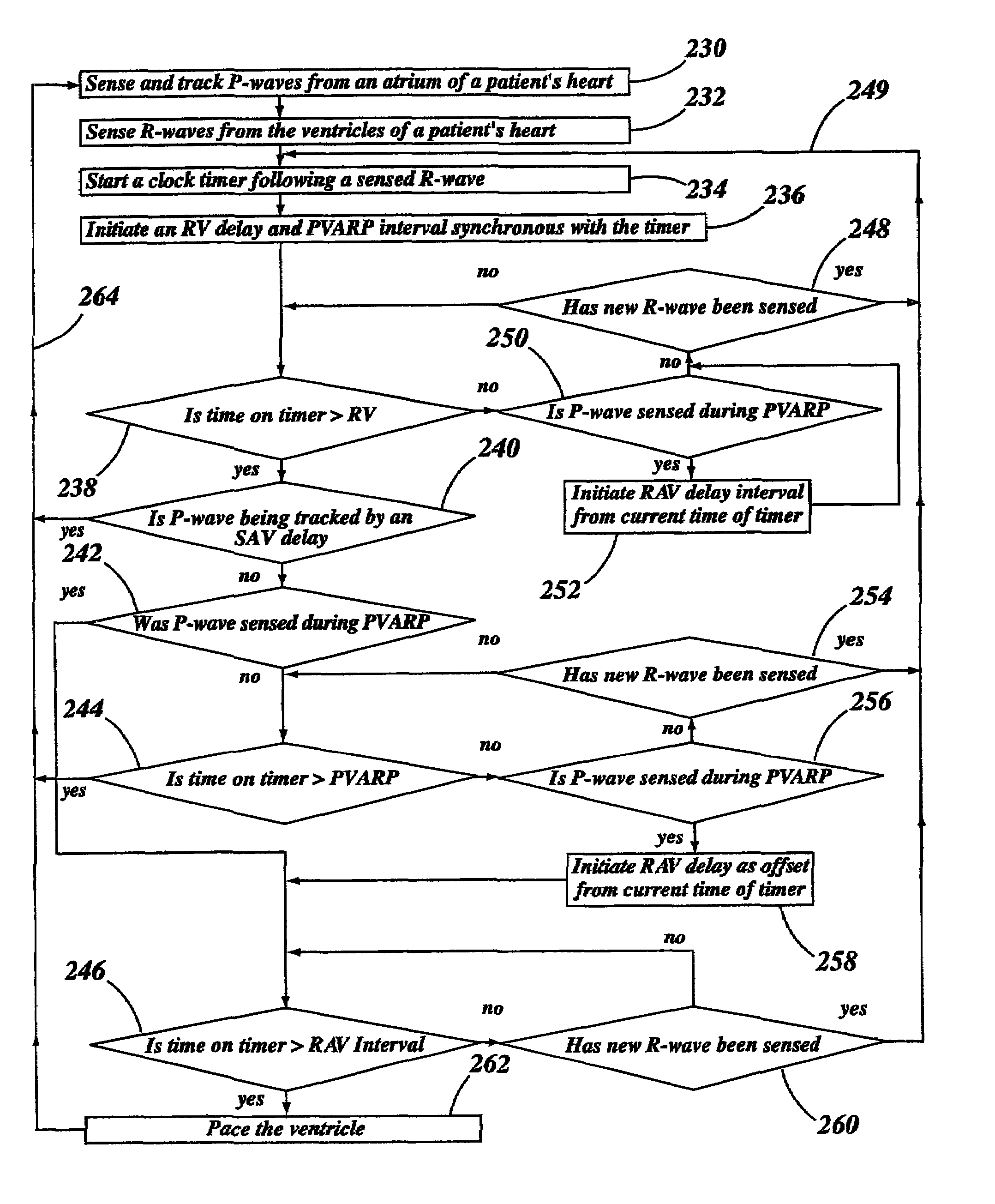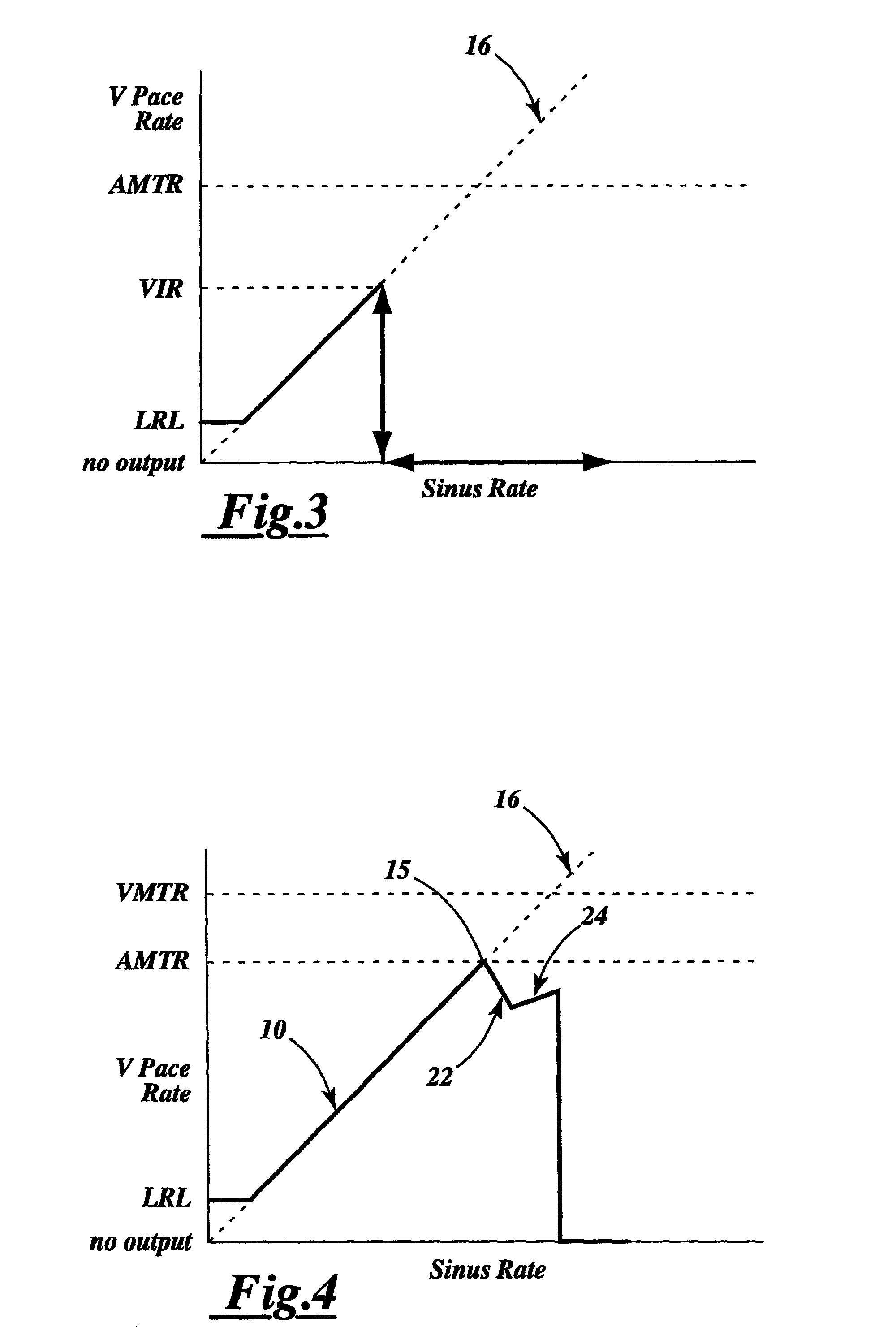Device and method for ventricular tracking and pacing
- Summary
- Abstract
- Description
- Claims
- Application Information
AI Technical Summary
Benefits of technology
Problems solved by technology
Method used
Image
Examples
Embodiment Construction
[0064]Referring first to FIGS. 1–3, these graphs show the intrinsic atrial rate or sinus rate of a patient in relation to the paced ventricular rate or output of a conventional atrial tracking pacemaker when used in a variety of patient conditions. FIG. 1 illustrates the ventricular pacing rate by a conventional atrial tracking pacemaker, pacing the heart of a patient having a complete block of all intrinsic conduction. As the sinus rate increases, the pacemaker's pacing rate tracks the atrial rate until the pacing rate reaches a pre-programmed atrial maximum tracking rate (AMTR) at 15. At this point, as the atrial rate continues to increase, there is a fall-off in the ventricular pacing rate attributable to a pacemaker mediated atrial Wenckebach behavior at 12. During this period, some of the pacemaker's ventricular pacing pulses are inhibited by the pacemaker to prevent pacing the ventricle at a rate above the AMTR As the sinus rate at 16 continues to increase above the AMTR, the ...
PUM
 Login to View More
Login to View More Abstract
Description
Claims
Application Information
 Login to View More
Login to View More - R&D
- Intellectual Property
- Life Sciences
- Materials
- Tech Scout
- Unparalleled Data Quality
- Higher Quality Content
- 60% Fewer Hallucinations
Browse by: Latest US Patents, China's latest patents, Technical Efficacy Thesaurus, Application Domain, Technology Topic, Popular Technical Reports.
© 2025 PatSnap. All rights reserved.Legal|Privacy policy|Modern Slavery Act Transparency Statement|Sitemap|About US| Contact US: help@patsnap.com



